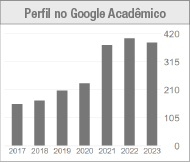Rodrigo García, politics and the rhapsodic drive in The story of Ronald, the McDonald's clown
DOI:
https://doi.org/10.5965/1414573102512024e0115Keywords:
theater theory, dramaturgy, rhapsodic drive, capistalism, McDonald'sAbstract
Based on fragments of the crisis that has marked theatrical language over the last two centuries, this article aims to understand how approaches between theater and politics are reconfigured through the rhapsodic drive in the play The Story of Ronald, the McDonald's Clown, by the playwright Spanish-Argentine Rodrigo García. It was possible to see that the work uses the juxtaposition and overflow of dramatic, lyrical and epic modes to compose a look that puts into tension the influence of large companies such as the American fast food chain on contemporary consumption. A dramaturgical language that reinvents paradigms and dialogues with the poetics of post-modernity.
Downloads
References
A HISTÓRIA de Ronald, o palhaço do McDonald's [La historia de Ronald, el payaso de McDonald’s]. Texto de Rodrigo García. Encenação de Rodrigo García. Atuação: Ruben Ametlle ou Ion Munduate, Juan Loriente e Juan Navarro. Realização: La Carnicería Teatro. Espanha, 2002. Disponível em: <https://rodrigogarcia.es/ronald> Acesso em: 25 de abr. 2024.
BIET, Christian. Rencontre avec Rodrigo García sur le spectacle Evel Knievel contre Macbeth na terra do finado Humberto. Université de Nanterre/Théâtre des Amandiers. Nanterre, 04 abril 2019 (registro em áudio).
KINCHELOE, Joe L. The Sign of the Burger: McDonald's and the Culture of Power. Philadelphia: Temple University Press, 2002.
MASSA, Clóvis Dias. Tensões e interações entre dramaturgia e escritura dramática. Urdimento - Revista de Estudos em Artes Cênicas, Florianópolis, v. 1, n. 40, 2021. DOI: 10.5965/1414573101402021e0209. Disponível em: https://www.revistas.udesc.br/index.php/urdimento/article/view/19250. Acesso em: 17 jun. 2024.
OROZCO, Lourdes. Rodrigo García and La Carnicería Teatro / Boucherie Théâtre. In: DELGADO, Maria M.; REBELATTO, Dan (org.). Contemporary European Theatre Directors. Abingdon e New York: Routledge, 2020. p. 407- 420.
PIGNON, Rafaëlle Jolivet. La représentation rhapsodique: quand la scène invente le texte. Montpellier: L'Entretemps, 2015.
RANCIÈRE, Jacques. As distâncias do cinema. Rio de Janeiro: Contraponto, 2016.
RANCIÈRE, Jacques. O espectador emancipado. São Paulo: Editora WWF Martins Fontes, 2014.
RITZER, George. The McDonaldization Thesis: explorations and extensions. Londres: SAGE Publications Ltd, 1998.
SANCHES, João Alberto Lima. Dramaturgia e Pós-Modernidade: a rapsódia como estratégia pós-moderna para o drama. Revista Cena, Porto Alegre, n. 23, p. 101-110, set./dez. 2017.
SARRAZAC, Jean-Pierre. Poética do drama moderno. São Paulo: Perspectiva, 2017.
SARRAZAC, Jean-Pierre e DANAN, Joseph. Atelier d'écriture théâtrale. Arles: Actes Sud – Papiers, 2012.
SILVA, Camila Damasceno. A dramaturgia performativa de Rodrigo García e a produção de corporeidades. 2015. 107 f. Dissertação (Mestrado em Artes da Cena) – Universidade Estadual de Campinas, Campinas, 2015.
STRANGER, Inés. ”Rodrigo García: entre drame et performance". In SARRAZAC, Jean-Pierre & NAUGRETTE, Catherine (Org.). La réinvention du drama (sous l’influ- ence de la scène). Études Théâtrales, nº 38-39, 2007. p. 173-176.
SZONDI, Peter. Teoria do drama moderno [1880-1950]. São Paulo: Cosac & Naif, 2001.
TACKELS, Bruno. Rodrigo García: écrivains de plateau IV. Besançon: Les Solitaires Intempestifs, 2006.
Published
How to Cite
Issue
Section
License
Copyright (c) 2024 Urdimento: Revista de Estudos em Artes Cênicas

This work is licensed under a Creative Commons Attribution 4.0 International License.
Copyright Statement
The articles published by the magazine are free to use. The copyright is all assigned to the magazine. The articles whose authors are identified represent the expression from the point of view of their authors and not the official position of the journal Urdimento. The author (s) undertakes whenever publishing material relating to the article published in Revista Urdimento mention the said publication as follows: This article was originally published by Urdimento magazine in its volume (put the volume), number (put the number) in the year of (put the year) and can be accessed at:
http://www.revistas.udesc.br/index.php/urdimento
This work is licensed under a Creative Commons Attribution 4.0 International License.




